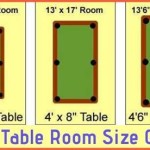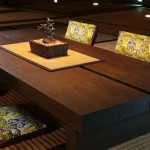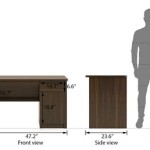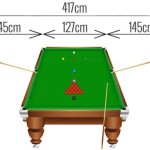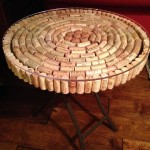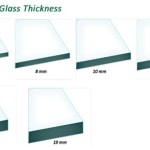Measurements of a Full-Size Ping Pong Table
The precise dimensions of a full-size ping pong table, crucial for standardized gameplay, are carefully regulated by international governing bodies. Understanding these dimensions is vital not only for competitive play but also for recreational players wishing to accurately replicate the official playing experience. This article will delve into the precise measurements, describe the materials used, and highlight the importance of adhering to these specifications for fair and enjoyable table tennis.
The International Table Tennis Federation (ITTF) rigorously defines the specifications for table tennis equipment, including the table itself. These standards ensure uniformity across tournaments and allow players to develop consistent techniques based on a standardized playing surface. Deviations from these regulated dimensions can significantly impact the bounce of the ball, the speed of play, and overall gameplay experience. Therefore, a thorough understanding of the proper dimensions is essential for both professional and amateur players.
Overall Table Dimensions
The official dimensions of a full-size ping pong table are as follows. The length of the table must be 274 centimeters (108 inches), the width 152.5 centimeters (60 inches), and the height from the floor to the top playing surface 76 centimeters (30 inches). These dimensions are unwavering and are used in all official table tennis tournaments worldwide.
The rectangular shape facilitates a consistent playing area characterized by predictable ball trajectories, contributing to the game's strategic depth. The length and width of the table are designed to accommodate a diverse range of playing styles, from aggressive attacking to defensive blocking. The specified height ensures players maintain a comfortable and ergonomic playing position, minimizing strain and fatigue during long matches.
These dimensions are not arbitrary; they are the result of years of refinement and standardization to create a playing surface that is both challenging and fair. Deviating from these dimensions, even slightly, can alter gameplay substantially and therefore, should be avoided, especially in a competition setting or when practicing for one.
Net Specifications
The net plays a critical role in table tennis, dividing the playing surface and necessitating specific skill for players to perform effective shots over it. Consequently, precise stipulations govern the net's height, length, and suspension.
According to ITTF regulations, the net should be 15.25 centimeters (6 inches) high. This height is measured from the top of the playing surface to the highest point of the net. The net must extend across the entire width of the table, dividing it into two equal halves. The net is suspended by a cord that runs along its entire length. This cord is attached to posts that are positioned outside the table by 15.25 cm (6 inches) on each side.
The distance between the bottom of the net and the table surface must be uniform across the entire length. Sagging or unevenness in the net can unfairly affect gameplay and give an advantage to one player. The color of the net is typically dark, often black or dark green, to provide a clear visual contrast against the white or light-colored ball. The net is an integral part of the gameplay and any variance in its measurement can drastically alter the playing experience.
The net posts and clamps used to secure the net to the table must also adhere to certain criteria. They should be designed in such a way that they do not interfere with the gameplay or present a hazard to the players. The clamps must securely hold the net in place without damaging the table surface.
Surface Properties and Materials
Beyond the physical dimensions, the properties of the table's playing surface profoundly influence the game. The material used, its thickness, and its ability to provide a consistent and predictable bounce are all crucial considerations.
According to ITTF regulations, the playing surface must be made of a uniform material and provide a consistent bounce. Typically, the table top is constructed from engineered wood products, such as particleboard or MDF (Medium Density Fiberboard). The thickness of the playing surface typically ranges from 16mm to 25mm. Tables intended for higher-level play often have thicker surfaces to improve bounce consistency and reduce vibrations.
The surface color should be uniform and matte, usually dark green or blue. This minimizes glare and allows players to easily track the ball's movement. A white line, 2 centimeters (0.79 inches) wide, runs along each edge of the table. These lines are referred to as the sidelines and end lines. For doubles play, a white line, 3 millimeters (0.12 inches) wide, runs down the center of the table, dividing each half into two equal courts.
The bounce of the ball is a critical factor regulated by the ITTF. When a standard table tennis ball is dropped from a height of 30 centimeters (11.8 inches) onto the table surface, it should bounce up approximately 23 centimeters (9.1 inches). This consistent bounce allows players to accurately judge the ball's trajectory and plan their shots accordingly.
The playing surface's finish is equally vital. It should be smooth and free from imperfections that could affect the ball's trajectory. A matte finish is preferred to minimize glare, which can distract players and impair their ability to track the ball. Regular cleaning is essential to maintain the surface's smoothness and consistency.
The frame supporting the playing surface provides stability and structural integrity to the table. It is typically made of steel or other durable materials. The frame should be designed to prevent warping or sagging of the playing surface, ensuring that the table remains level and provides a consistent playing experience, even after repeated use.
The legs of the table are equally important for stability. They should be sturdy and adjustable to allow for leveling the playing surface on uneven floors. Adjustable legs ensure that the table sits perfectly flat, contributing to fair and consistent gameplay. These key elements, combined with the strict adherence to dimensions, collectively contribute to the standard of play demanded for a full-size ping pong table.

Table Tennis Dlgsc

Table Tennis Measurements Size And Dimensions Cornilleau

To Choose The Right Table Tennis Size For You Stiga Sports

To Choose The Right Table Tennis Size For You Stiga Sports

Table Tennis Room Size Court And Dimensions

Table Tennis Tables Which Is Right For Me Hart Sport New Zealand

Ping Pong Table Dimensions The Guy

Table Tennis Buyer S Guide Liberty
Table Tennis Tables Dimensions Drawings Com

Ping Pong Table Dimensions Diy Outdoor

